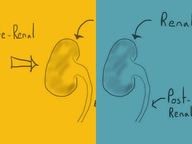
Association between a chloride liberal vs chloride-restrictive intravenous fluid administration strategy and kidney injury in critically ill adults
What did they do?
What did they find?
In terms of the outcomes of interest the intervention group had a lower rise in their creatinine levels compared to the control group at 14.8 micromol/L, (95% CI 9.8 – 19.9 micromol/L) compared with 22.6 micromol/L (95% CI 17.5 – 27.7 micromol/L). There was a decrease in AKI as defined by the RIFLE criteria but this was only significant for the injury classification level at 3% (1.8 – 4.2) compared to 6.3% (4.5 – 8.1) of patients in the control group (p = 0.002). There was also a decrease in the use of RRT in the intervention group at 6.3% (4.6 – 8.1%) compared with 10% (8.1-12% in the control group (p = 0.005). Other differences in outcomes weren’t significant.
Is it any good?
Final Thoughts
So in summary:
- It’s probably best to minimise the amount of chloride we give our patients, unless there is a clear indication otherwise.
- There are probably other interventions that are more important in minimising the impact of AKI on our patients than chloride load
Tom Heaton
References
- Yunos NM et al. Association between a chloride liberal vs chloride-restrictive intravenous fluid administration strategy and kidney injury in critically ill adults. JAMA. 2012. 308 (15). 1566-72.
 RSS Feed
RSS Feed
